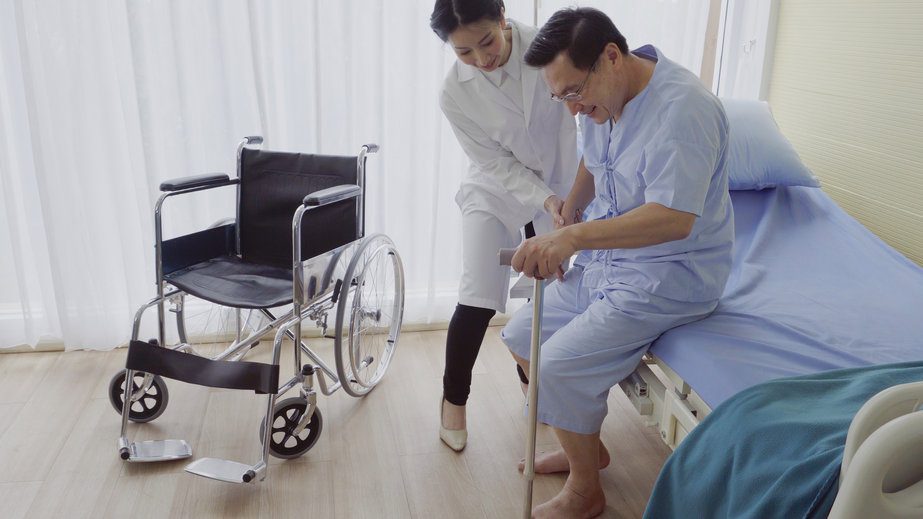Using Proper Body Mechanics
Knowing and using proper body mechanics helps you avoid hurting yourself. Without them, one wrong move can give you a lifetime of pain and suffering.
*BODY MECHANICS ABC’s
A- Adjust Equipment Height
Adjust the height of any equipment you are using to allow you to work at a comfortable level. For example, if you give care to someone in a bed that raises, you want the bed at waist level. If you get the person out of bed, you want to lower the bed to the hip level.
B-Bend your Knees
With your feet shoulder-distance apart, bend your knees, and move close to the object you want to lift. Staying low and center helps you maintain a better balance and distribute weight evenly.
C – Center of Gravity
Keep your base of support wide and stable. That means keeping your feet about shoulder distance apart. To find your center of gravity, draw an imaginary line from your head through your body to the ground. It should end up halfway between your two feet. That’s your center of gravity.
S-Straight Line
Try to keep your body in a straight line rather than twisting as you move. Do this by moving your feet instead of twisting or bending at your waist. Learn to keep your back, neck, pelvis, and feet in alignment and focus on keeping what you are doing directly in front of you.
*Resource: Lippincott Nursing Procedures (2019) (Eighth Ed.) Philadelphia: Wolters Kluwer. 83
Sample videos
Proper Body Mechanics
https://www.youtube.com/watch?v=zYF5BZyD6nE
Body Mechanics
https://www.youtube.com/watch?v=4d4WeQvdxJg
How to Perform Proper Body Mechanics
*How to Push and Pull Using Proper Body Mechanics
Pushing
1. Stand close to the object and put one foot slightly ahead of the other. Tighten all your lower body muscles (legs, pelvis, abdomen, and butt)
2. To push, put your hands on the stable part of the object, bend your elbows, lean into it by shifting your weight from your back leg to your front leg, and apply steady pressure.
Pulling
3. To pull, grasp the object as you bend your elbows and lean away from it, shifting your weight from your front leg to your back leg. Pull smoothly, avoiding sudden, jerky movements.
4. Once it starts. Stopping and starting to use more energy.
Stooping Using Correct Body Mechanics
1. Stand with feet about 10-12 inches apart and one foot slightly ahead of the other, giving you a broad support base.
2. Lower yourself by bending your knees, placing more weight on your front foot than your back foot. Keep your upper body straight by not bending at the waist.
3. Straighten your knees and keep your back straight as you stand back up.
Lifting and Carrying with Correct Body Mechanics
1. Following the process for stopping in front of an object.
2. Grasp the object and tighten your stomach muscles.
3. Stand up by straightening your knees, using your leg and hip muscles. Keep your back straight. Keep the object close to your body.
4. Carry the object close to you at waist height to avoid straining your back muscles.
Additional Considerations
1. Wear low heels, flexible nonslip shoes, and closed backs to prevent accidents from slips and falls.
2. When possible, pull rather than push because the elbow flexors are stronger than the extensor muscles. Pulling an object allows hip and leg muscles and avoids using lower back muscles.
3. When doing heavy lifting or moving, use assistive or mechanical devices when possible.
*Resource: Lippincott Nursing Procedures (2019) (Eighth Ed.) Philadelphia: Wolters Kluwer. 83

